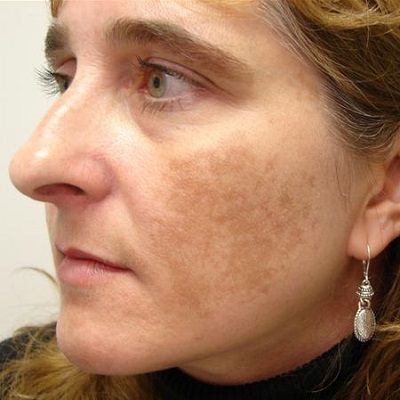
In the present epoch, due to the increasing air pollution, the rate of skin diseases is also increasing. This is because the ozone layer that prevents the harmful radiations enter the sun is damaging due to it. These ultraviolet radiations may harm the skin in several ways, one of which is hyperpigmentation. The body creates more melanin, the pigment that gives the skin its color, when exposed to UV light. Hyperpigmentation and uneven skin tone can result from excessive melanin production. People try different treatments including oral and topical medications but of no use. They suffer From Sunspots to Melasma Treatment in Dubai: How to Treat Hyperpigmentation.
What is Melasma?
Melasma is represented by brown or gray-brown patches on the skin. It is a kind of hyperpigmentation that often affects the face. People with darker complexion tones and women are more likely to experience it. Although the specific etiology of melasma is unknown, it is thought to be a result of sun exposure, heredity, hormonal changes, such as those that take place during pregnancy or when taking birth control pills, and hormonal changes in general.
It mainly occurs when there is an increase in melanin production in the body. Melanin is the pigment that provides color to the skin. It helps protect the skin from UV radiation and other harmful chemicals that can harm the skin. But when it is produced beyond its normal limits, it gives a darker color to the skin.
Common Areas:
Melasma usually occurs in areas that are exposed to the sun. Exposure to the sun tends to increase melanin and cause hyperpigmentation in certain regions. The common areas where melasma occurs are
- Face.
- Cheeks.
- Nose.
- Upper lips.
- Back.
Melasma Treatment:
Melasma Treatment in Dubai can occur through different procedures. According to dermatologists, there are several treatments available that help to treat this condition. The doctor assesses your past medical history and current condition of the skin and advises you on the treatment accordingly.
Topical Medication:
The topical medications help to reduce the production of melanin and lessen the hyperpigmentation in the affected areas. They are applied externally on the skin. The medicines that help to treat the melasma superficially are
- Hydroquinone.
- Tretinoin.
- Corticosteroids.
- Retinoids.
- Kojic and Azelaic acid.
Chemical Peels:
Another popular method for treating Melasma is chemical peels. Applying a chemical solution to the skin in a chemical peel causes the outermost layer of the skin to peel off. This enhances the general texture and tone of the skin and lessens the appearance of hyperpigmentation brought on by melasma.
Chemical peels consist of Beta-hydroxy acids (BHAs), trichloroacetic acid (TCA), and alpha-hydroxy acids (AHAs). These substances function by removing the top layer of skin and promoting the growth of new skin cells, which can aid in lessening the visibility of melasma-related dark patches.
Laser Melasma Treatment:
Another alternative for treating melasma is laser therapy. Laser Therapy targets the pigmented regions of the skin using a specialized laser. The pigmentation is broken apart by the light pulses penetrating the skin, which the body’s immune system subsequently absorbs and eliminates.
The degree and location of the problem will determine the particular kind of laser that is utilized to treat melasma. For instance, intense pulsed light (IPL) lasers help to treat broader regions of the skin whereas fractional lasers target particularly larger areas of hyperpigmented areas. It is important to remember that not everyone is a good candidate for laser therapy for melasma, particularly individuals with darker skin tones or a history of skin allergies or sensitivity.
Photorejuvenation:
Photorejuvenation is a non-invasive treatment that is also referred to as intense pulsed light (IPL) therapy. It employs light energy to target and lessen the appearance of hyperpigmentation, including melasma.
In this procedure, the doctor delivers short bursts of intense light to the afflicted regions of the skin using a specialized apparatus. The pigmented patches take in light energy and break down the pigment in the skin.
The benefit of this procedure is that it can target certain hyperpigmented spots while protecting the surrounding skin. Additionally, light radiation can encourage the formation of collagen, which can enhance the overall look and texture of the skin
Aftercare:
The aftercare measures for this treatment are easy and efficient to follow.
- To reduce side effects following your surgery, apply the topical medicine to the treatment area.
- Do not touch the treated area unnecessarily
- Keep the site of treatment moisturized
- After the surgery, refrain from touching or massaging your skin for around two weeks.
- Stay out of the sun for several weeks.
- Before venturing outside during the day, slather your face with sunscreen.
- Scabs may occasionally form; avoid taking or scratching them.
Benefits of Melasma Treatment:
The Benefits of Melasma Treatment highly depend on the treatment method, the patient’s skin type, and how well they respond to it.
- Reduce the appearance of hyperpigmentation
- Enhance the overall texture and tone of the skin
- Provide confidence and self-esteem
- Make the skin smoother and radiating
Cost of Melasma Treatment:
The Melasma Treatment Cost is affordable for every individual. However, the doctor decides the actual cost after examining your skin type and deciding on the procedure for treatment. The estimated cost for the procedure ranges from AED 700 to AED 9,500.
Book a Consultation!
Dynamic Clinic offers the treatment From Sunspots to Melasma: How to Treat Hyperpigmentation. If you are looking forward to getting the treatment for melasma then you can contact our licensed and experienced doctor for the best possible services. Simply fill out the appointment form and schedule your consultation now.


































